


|
The Patio of the Lions (Patio de los Leones)Probably the most famous part of the Alhambra, this courtyard is at the heart of the private section of the palace; the King's residence and private apartments are around this court. Its name derives from the central fountain resting on the backs of the twelve lions, whose mouths throw jets of water. This white marble fountain has a poem by Ibn Zamrak was carved on the border of the basin. At the middle of each of the two longer sides of the patio there is a semicircular arch bigger than the rest of the arches and with archivolts of mocarabes and scallops decorated with styled vegetal forms. These arches lead to the Hall of the Abencerrajes (Sala de los Abencerrajes) and with the Hall of the Two Sisters (Sala de Dos Hermanas). | |
A cloister-like planThe ground plan is rectangular, surrounded by porches, resembling a Christian cloister rather than the typical Andalusian courtyard style (which is more like the Court of Myrtles). Delicate arches and columns with slender shafts as well as ornate stucco and plaster reliefs add to the beauty and grace of this self-contained patio. | ||

|
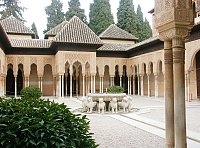
|

|

|
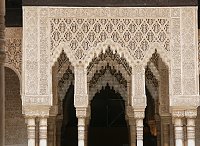
|
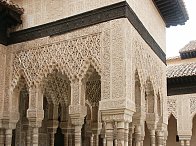
|
| The columns around the courtyard are arranged singly, doubly, or in threes--creating a subtle rhythm. | 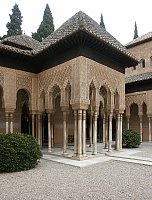
|
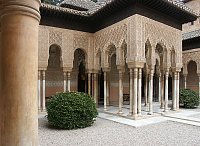
|
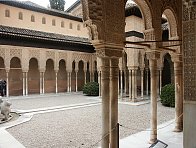
|
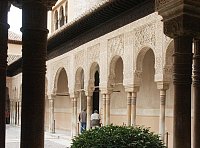
|
|
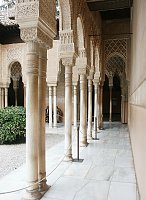
|
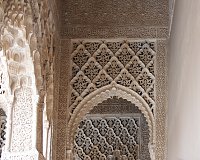
|
|
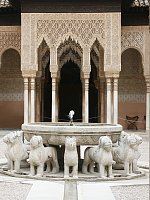
|
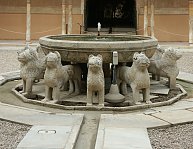
|
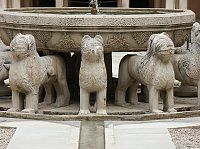
|
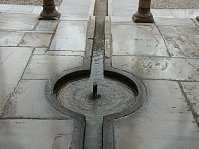
|
Architectural symbolism?It has been suggested that the twelve lions may represent the 12 months or the 12 signs of the Zodiac and that the four channels of water might represent the 4 corners of the cosmos, the 4 cardinal points of the compass or the 4 rivers of Paradise. |
|
 Click here to return to index of art historical sites.
Click here to return to index of art historical sites.
 Click here to return to index of artists and architects.
Click here to return to index of artists and architects.
 Click here to return to chronological index.
Click here to return to chronological index.
 Click here to see the home page of Bluffton University.
Click here to see the home page of Bluffton University.
